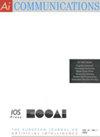用子句学习增强分支定界MaxSAT求解器
IF 1.4
4区 计算机科学
Q4 COMPUTER SCIENCE, ARTIFICIAL INTELLIGENCE
引用次数: 5
摘要
最大可满足性问题(MaxSAT)为组合优化问题提供了一种合适的问题求解形式。然而,MaxSAT求解器实现的分支定界(Branch-and-Bound, BnB)方案并没有成功地解决具有挑战性的现实优化问题。人们普遍认为BnB MaxSAT解算器只在随机和一些特定的精心制作的实例上优越。同时,基于sat的MaxSAT求解器在实际实例中表现得特别好。为了克服BnB MaxSAT求解器的这一缺点,本文提出了一种新的BnB MaxSAT求解器MaxCDCL。MaxCDCL的主要特点是结合了软冲突的子句学习和高效的边界过程。此外,本文还报告了一项实验调查,表明与2020年MaxSAT评估中表现最好的求解器相比,MaxCDCL具有竞争力。MaxCDCL在实际实例中表现非常好,并解决了许多其他求解器无法解决的实例。此外,当与性能最好的MaxSAT求解器结合使用时,MaxCDCL可以解决迄今为止所有MaxSAT评估中收集的最多实例。本文章由计算机程序翻译,如有差异,请以英文原文为准。
Boosting branch-and-bound MaxSAT solvers with clause learning
The Maximum Satisfiability Problem, or MaxSAT, offers a suitable problem solving formalism for combinatorial optimization problems. Nevertheless, MaxSAT solvers implementing the Branch-and-Bound (BnB) scheme have not succeeded in solving challenging real-world optimization problems. It is widely believed that BnB MaxSAT solvers are only superior on random and some specific crafted instances. At the same time, SAT-based MaxSAT solvers perform particularly well on real-world instances. To overcome this shortcoming of BnB MaxSAT solvers, this paper proposes a new BnB MaxSAT solver called MaxCDCL. The main feature of MaxCDCL is the combination of clause learning of soft conflicts and an efficient bounding procedure. Moreover, the paper reports on an experimental investigation showing that MaxCDCL is competitive when compared with the best performing solvers of the 2020 MaxSAT Evaluation. MaxCDCL performs very well on real-world instances, and solves a number of instances that other solvers cannot solve. Furthermore, MaxCDCL, when combined with the best performing MaxSAT solvers, solves the highest number of instances of a collection from all the MaxSAT evaluations held so far.
求助全文
通过发布文献求助,成功后即可免费获取论文全文。
去求助
来源期刊

AI Communications
工程技术-计算机:人工智能
CiteScore
2.30
自引率
12.50%
发文量
34
审稿时长
4.5 months
期刊介绍:
AI Communications is a journal on artificial intelligence (AI) which has a close relationship to EurAI (European Association for Artificial Intelligence, formerly ECCAI). It covers the whole AI community: Scientific institutions as well as commercial and industrial companies.
AI Communications aims to enhance contacts and information exchange between AI researchers and developers, and to provide supranational information to those concerned with AI and advanced information processing. AI Communications publishes refereed articles concerning scientific and technical AI procedures, provided they are of sufficient interest to a large readership of both scientific and practical background. In addition it contains high-level background material, both at the technical level as well as the level of opinions, policies and news.
 求助内容:
求助内容: 应助结果提醒方式:
应助结果提醒方式:


